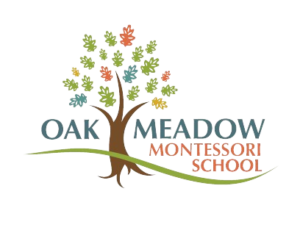Building social-emotional intelligence in children
The thirty-foot-long balancing platform sat precariously in front of them, the whole length supported by one large, round cylinder underneath, just slightly off-center. Oak Meadow Middle School students looked nervously at this larger-than-life puzzle. Their task would be to find a way to put all of the students on the balancing board, using their bodies to create an equilibrium that would allow the platform to balance off the ground for 15 seconds. Additionally, two team members on opposite sides of the board had to switch places while everyone else tried to keep the beam balanced for another 15 seconds.This was just one of many challenges the Middle School students had to conquer as a team during their week at Camp Kieve.

Defining the problem
What was the goal of this exercise? Was it to balance the platform? Not really. The deeper purpose was for the students to learn more about themselves individually, and to develop the important skills of collaborating with their peers to achieve a successful group solution. After several failed attempts on the balancing platform, the students finally succeeded. I asked them what they learned, and they shared, “how to communicate better,” “how to listen to others,” “how to appreciate an unpopular idea without making fun of it,” “how to get along better,” “how to try new ideas even when they fail, in order to learn from your mistakes.”
Before coming to Oak Meadow, I taught a high school class in entrepreneurship. The students in my class had to tackle a challenging curriculum (based on a Stanford University course), and apply it to solving an incredibly complex, multi-variable business problem that could be solved in many different possible ways. In order to be successful, the students had to do more than master the curriculum. They had to learn how to leverage the skills and talents and capacities of their team members. They had to tackle a challenging problem using deep research and work with others to come up with solutions that would exceed what might be possible by one team member alone. My students always struggled with this, because they never had been given opportunities to work on a team like this as part of the academic curriculum.

Testing a possible solution
At Oak Meadow, the teachers in middle school (and across program levels) are working daily to find better and better ways to make sure the individual talents of students are seen and recognized, and that each voice is equally valued. We want our middle school students who are already confident as leaders to learn how to listen better. We want quieter and more reflective students to better appreciate why their ideas are valuable and important and learn to confidently express themselves in their own unique way. We want to create a learning environment where no student feels diminished or silenced, or worse yet, made fun of. We want to give students complicated, practical life problems worth solving, and help them to develop the skills they need to arrive at better solutions as individuals and team members.
I have learned that the students who are given opportunities to develop these skills during their school years will form a much stronger foundation of social-emotional intelligence, and research shows conclusively that students who have developed these skills more fully, will end up being far more successful in their careers and in their personal lives.





